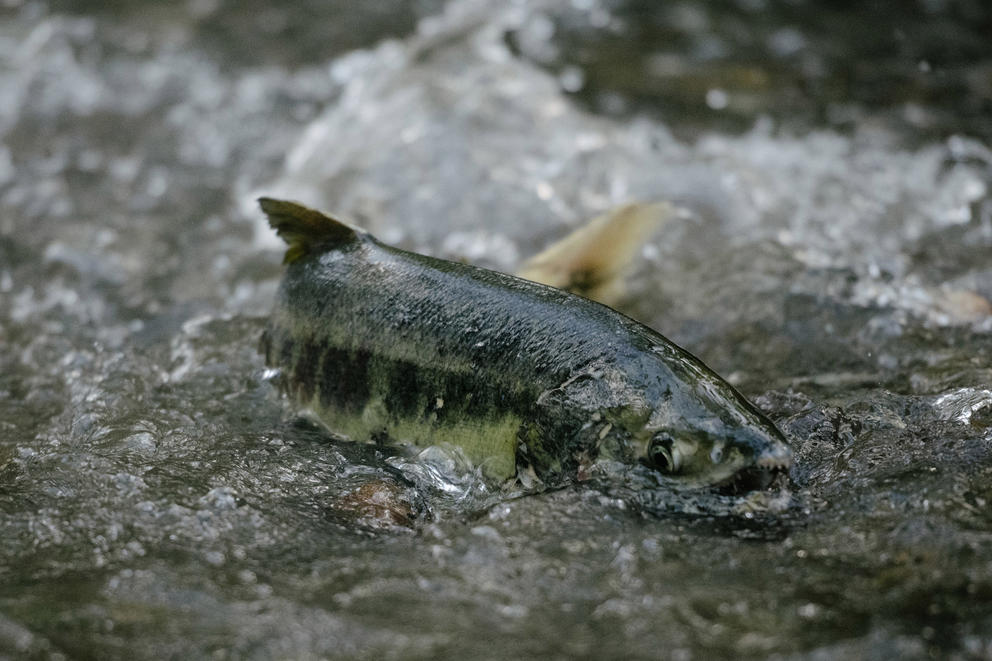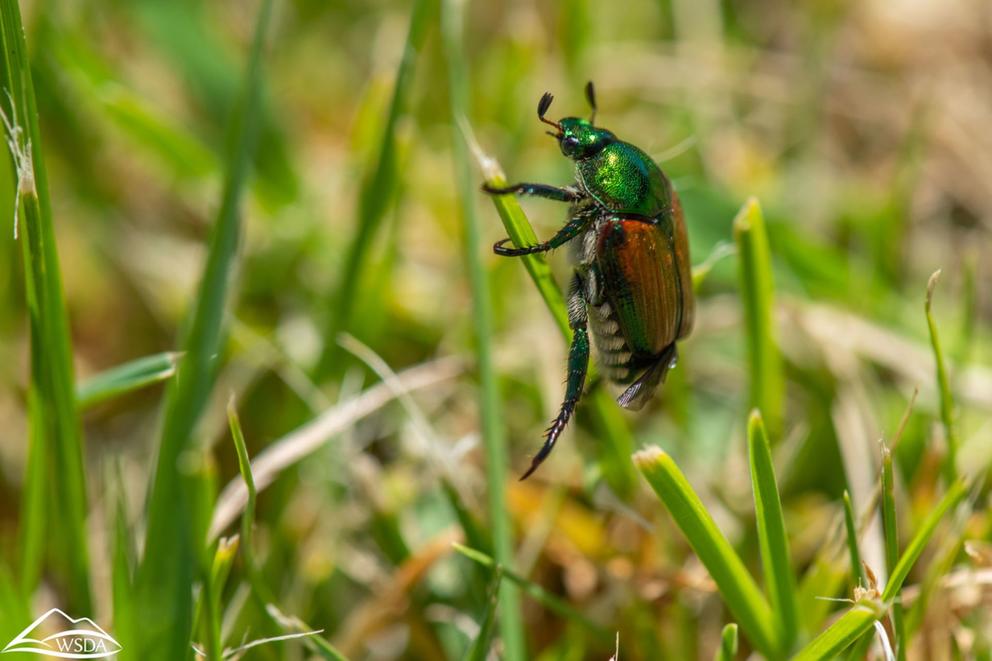Report raises concerns about tracing water quality, salmon safety

Chum salmon swim upstream to spawn in the waters of Pipers Creek in Carkeek Park in a 2021 photo. (Grant Hindsley for Crosscut)
The U.S. and Washington environmental agencies are not adequately tracking how high water temperatures and oxygen-depleting substances are harming Puget Sound’s salmon, according to a recent Government Accountability Office report.
Three salmon species — Puget Sound Chinook, Hood Canal summer-run chum, and Puget Sound steelhead — are listed as threatened under the federal Endangered Species Act. The National Oceanic and Atmospheric Administration reported in 2022 that all three species are at moderate risk of extinction.
Salmon require cool, clean and well-oxygenated water to survive. Warmer-than-optimal temperatures can stress and kill salmon while delaying their migration.
“The Lummi Nation reported that elevated water temperatures in the Nooksack River in 2021 contributed to the spread of pathogens that killed an estimated 2,500 Chinook salmon before the salmon could spawn,” the report said.
Nutrients from nitrogen from sewage treatment plants and general water runoff have depleted oxygen in Puget Sound. “Low levels of dissolved oxygen can alter embryo incubation periods, decrease the size of fry, increase the likelihood of predation, decrease feeding activity, and negatively affect swimming performance during migration,” the report said.
The GAO faulted the U.S. Environmental Protection Agency and the Washington Department of Ecology for not keeping up with their biennial reports on water quality related to salmon. Only two such reports have been submitted since 2012.
These reports are supposed to track where the state’s water quality standards are met, where water quality standards are borderline, where there is insufficient data to track the standards, and where water quality standards are not met. Roughly half of the 10,000 records examined by the GAO found insufficient data to judge the water quality at specific locations.
In its response to the GAO report, the EPA agreed with the GAO’s conclusions, and said it was working with the state Ecology Department to improve the timeliness of the water quality reports.
The Ecology Department said the GAO did not consider the scale and complexity of collecting and analyzing data from thousands of locations across Washington.


